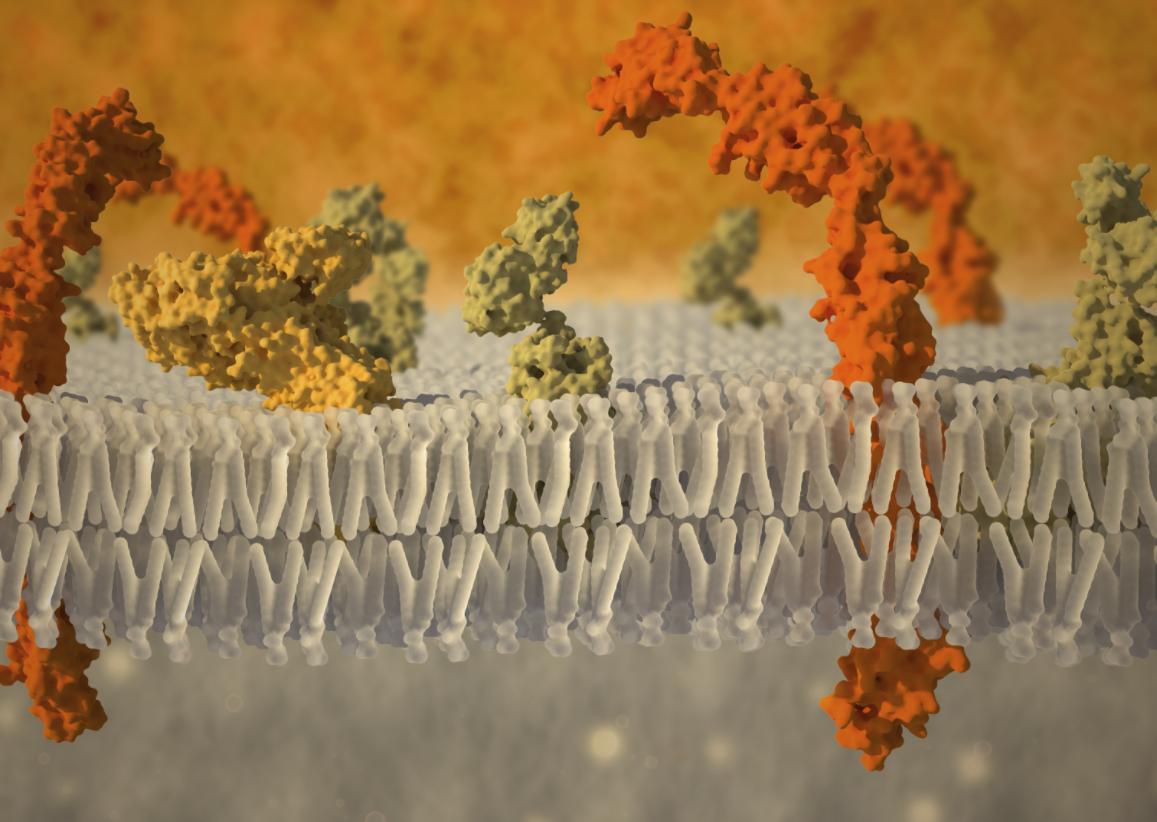Cell Membrane Transient Interaction Detection
Online InquiryCreative Proteomics is a leading biotechnology company with many years of experience in membrane and membrane protein research and analysis. Here, we are proud to offer a range of methods to help researchers and professionals investigate membrane transient interactions in different membrane trafficking and cell signaling events.

Importance of membrane transient interactions
Cell membranes are essential components of cell structure and function and are one of the subproteome of cells that maintain the basic homeostasis between the cytoplasm and the extracellular environment. Cell membranes are composed of various proteins, lipids, and carbohydrates that dynamically interact to regulate the cell cycle and communication. Membrane interactions can be classified into two types based on affinity and duration: strong/stable interactions, which last for a long time with high binding affinities (fM to nM), and weak/transient interactions that occur only in the microsecond to the second range and have low binding affinities (μM-mM). Membrane transient interactions play important roles in regulating the activation or inhibition of multiple membrane protein complexes. In membrane signaling networks, the same protein often forms multiple complexes with different membrane partners, and weak and transient interactions are key to driving these membrane proteins to function in multiple signaling and transport pathways simultaneously. In addition to protein-protein interactions, the transient lipid-protein and lipid-lipid interactions also play a major role in the formation of fluidity, curvature and structural domains of cell membranes.
Cell membrane transient interaction detection at Creative Proteomics
Creative Proteomics is committed to providing reliable, affordable ligand discovery services to our global customers. We have successfully expressed, purified, and characterized novel and often challenging membrane proteins and related products. We also have many years of experience in membrane and membrane protein research and analysis. In order to help our customers study membrane transient interactions, we provide a range of methods to detect and analyze transient interactions in the cell membranes, including short-lived cell membrane protein-protein, lipid-protein, and lipid-lipid interactions. Our services can help explore and provide information on the strength, kinetics, and spatial patterns of membrane transient interactions.
- Nuclear magnetic resonance (NMR) spectroscopy
NMR is a powerful technique for studying membrane transient interactions, providing information on the structure, dynamics, and thermodynamics of membrane transient complexes. In particular, NMR can provide atomic-level structural information. It is worth noting that NMR is not applicable to the study of living cell membrane interactions and, if needed, the differences between real cell membrane environments and in vitro conditions must be taken into account.
- Mass spectrometry (MS)
As a common method to study membrane dynamic interactions, MS is mainly applied to measure the mass and stoichiometry of the complex. Hydrogen-deuterium exchange MS (HDX-MS) is capable of detecting transient (millisecond range) protein conformational changes. We apply this technology to help our customers study transient lipid-protein interactions in the cell membranes.
- DNA-based membrane probes
Based on the combination of a DNA-based approach with fluorescence microscopes, we are able to detect transient interactions in live cell membranes, including protein-protein and lipid-lipid interactions.
- Förster resonance energy transfer (FRET)
FRET is a physical phenomenon in which energy is transferred from one excited fluorescent group to another fluorescent group. FRET allows measurement of intermolecular spacing ~1-10 nm and enables protein-protein interaction detection at the live cell level, making it another powerful technique for studying membrane molecular interactions.
- Super-resolution microscopy
Stimulated emission depletion (STED) microscopy is a super-resolution method. We combine this technique with fluorescence correlation spectroscopy (FCS) to image interactions below the diffraction limit to allow a better distinction between membrane free diffusion and transient interactions.
Short-lived cell membrane complexes formed by weak/transient interactions between various lipids and proteins play a key role in regulating cellular signaling and communication. These transient interactions have been found to be associated with immune signaling, host-pathogen interactions, and other cellular events. To help our customers investigate the cell membrane transient interactions, we provide a range of methods and services. If you don't find what you are looking for. Or do you have any questions or comments or would like a free quote? Do not hesitate to contact us.
Reference
- Bagheri, Yousef, Ahsan Ausaf Ali, and Mingxu You. "Current methods for detecting cell membrane transient interactions." Frontiers in Chemistry 8 (2020): 603259.
* For Research Use Only. Not for use in diagnostic procedures.



